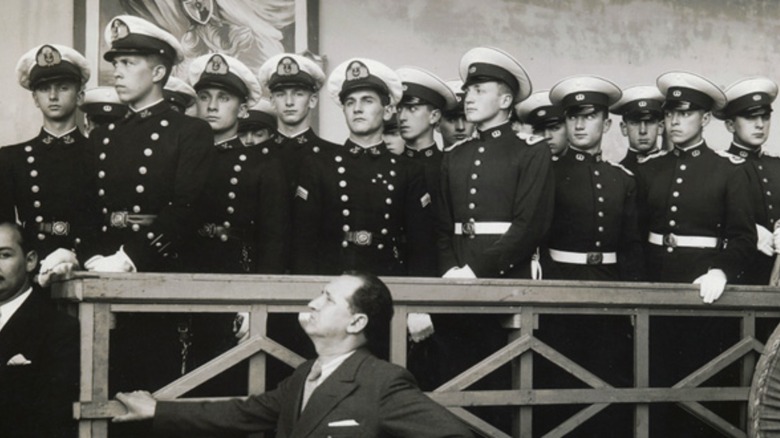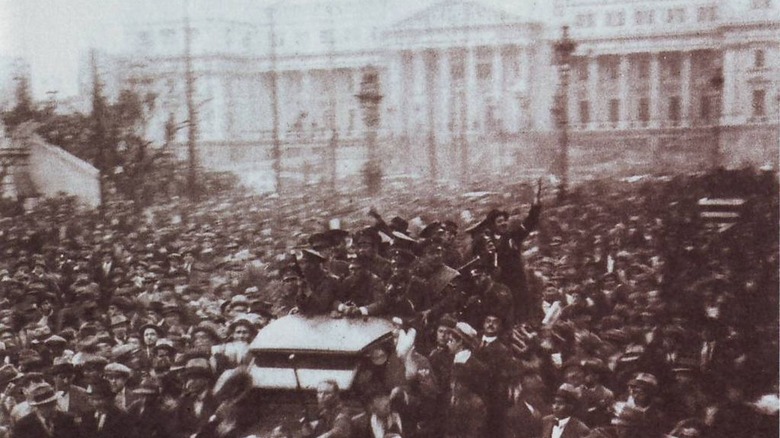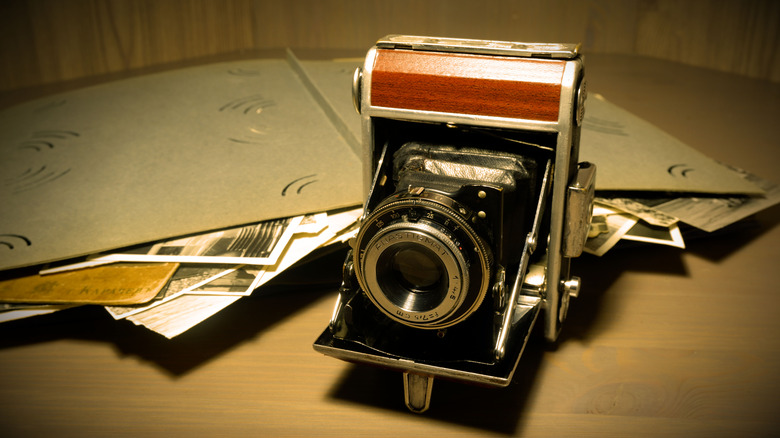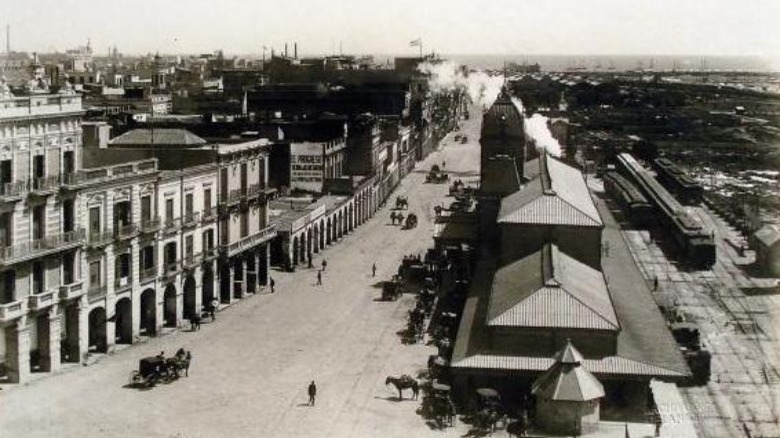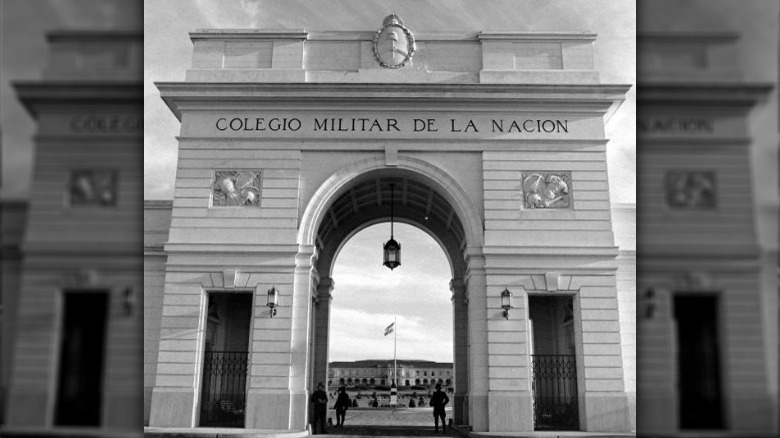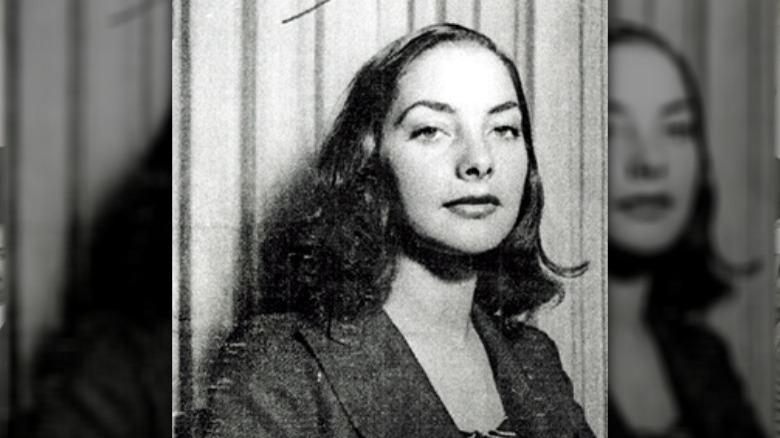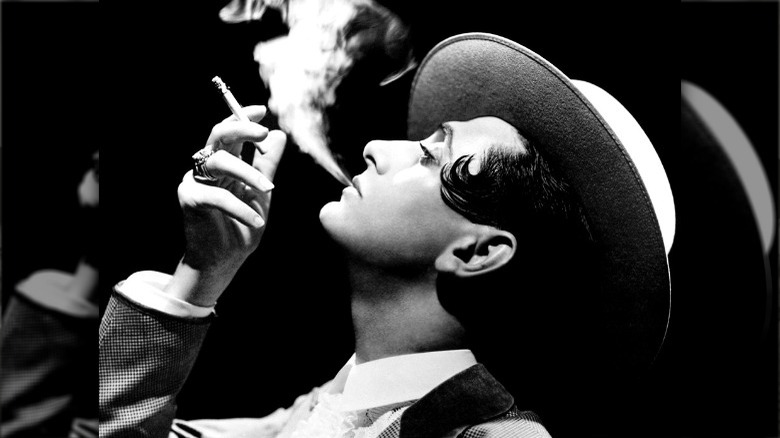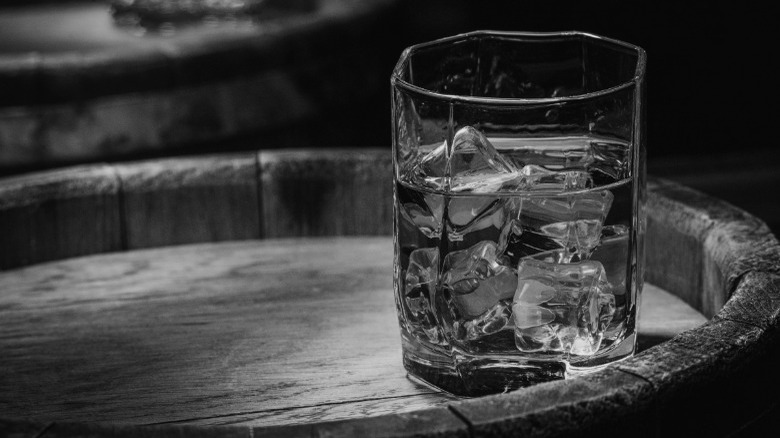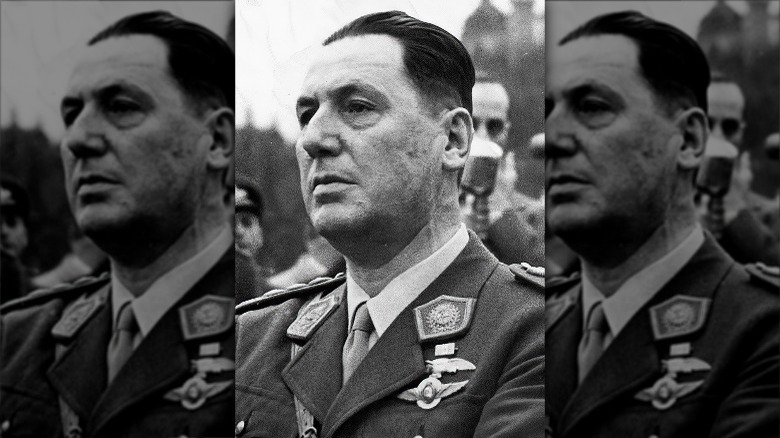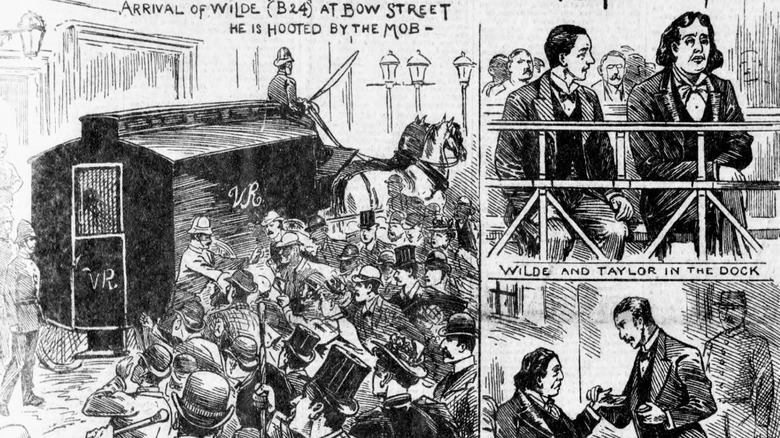Inside Ballvé Case, The Cadet Scandal That Led To A Coup In Argentina
History has more than its fair share of scandals, and that's not exactly a stretch to claim. Seriously, turn to any random page of any random history textbook (or just open up the news -– that would work, too), and chances probably are that you'd happen upon some point in time when someone did something that turned some heads.
But not all scandals are necessarily created equal. Some persist in the public awareness and pass into something akin to myth, while others are lost to the neverending flow of time. Some stir up a media frenzy immediately after, but still others might actually have a much larger impact, changing the entire socio-political landscape of countries for years to come.
Argentina's Ballvé Case -– also known simply as the cadet scandal –- occupies an odd intersection of those options. It's a story that's been largely buried and forgotten by most, but at the same time, it has alleged ties to the rise of Juan Perón and his effect on Argentinian politics for decades, as well as slotting squarely into the history of LGBTQ+ affairs in the early to mid-20th century. That's quite a lot, especially for a sequence of events that's been rather overshadowed by other goings-on of the 1900s.
Argentina and the Infamous Decade
When you think about the mid-20th century, there's probably a pretty decent chance that the first things that come to mind are World War II or the early part of the Cold War. But if you turn your attention away from the political theater of Europe for a bit, then you'd easily find a whole mess in other parts of the world.
As explained by an article published in the Hispanic American Historical Review, the turn of the 20th century also introduced changes to Argentinian society, with political power beginning to shift away from old nobility to the rising middle class. By the mid-1910s, Hipólito Yrigoyen came into power, much to the delight of the military at the time, and he held power for about a decade and a half.
But come 1930, the situation changed, the military wasn't all too pleased about Yrigoyen anymore, and, long story short, there was a coup that ultimately plunged the country into a period of even greater instability. Per Britannica, throughout the 1930s and into the 1940s, the Argentinian government swapped between near-dictatorial power (bordering on fascism), violent military juntas, and attempts to return to democracy. The economy similarly wavered, depending upon sometimes-shaky or controversial trade agreements with other nations, a situation that only worsened with World War II. Simply put, there just didn't seem to be a solution to the problems of the so-called "Infamous Decade," and multiple groups were eager for a way to better the situation.
The man behind the Ballvé Case
All things considered, it's probably not all too hard to guess that the Ballvé Case is named after some person somewhere near the center of this entire scandal. But just who is this infamous Ballvé?
Jorge Horacio Ballvé Piñero was born to a relatively rich family, one with means that allowed him to spend a decent chunk of his youth in Paris, as per Portal Devoto. Socio-economic status of his family aside, though, his upbringing wasn't exactly a happy one. He was subjected at a young age to punishments which, unfortunately, might sound familiar if you know anything about LGBTQ+ figures from across history: His family looked to "cure" his sexuality, even going so far as to force him into undergoing various medical tests and injections.
He was, however, able to find something of a sanctuary in a hobby nurtured by his grandmother: photography. Less fortunately, though, that very same hobby ultimately put him in a lot of hot water, effectively making him a very unlucky scapegoat.
Behind Ballvé's closed door
Getting into the social climate during the early to mid-20th century, you'd find the nightlife of the streets to be pretty loose places, at least when it came to things like rules. Regular parties, complete with dancing and drink -– that's what you could find around, at least if you had an idea of where to look (via Infobae). The door to Jorge Ballvé Piñero's apartment also stood to protect some secret rendezvous, but of a slightly different variety.
More specifically, they were quiet and intimate gatherings, coupled with amateur photoshoot sessions. A female acquaintance of Ballvé known as "Sonia," reports Portal Devoto, would meet normal, everyday men out on the streets of Argentina; those men came from all walks of life, but they were similar in that they were invited back to Ballvé's apartment for private photoshoots.
And that's not a euphemism, if you were wondering. These were literal photoshoots, with the men posing for Ballvé (and getting paid for it, per Pagina 12). Sometimes stretched sensually across furniture, sometimes standing in front of a curtain; sometimes clothed, other times not; sometimes incredibly confident, sometimes a tad more modest. But, regardless of the truth about what was going on behind closed doors, the idea of a bunch of young men spending private time together taking intimate photos began inviting questions from the world outside. In particular, speculations about sexuality really came to the forefront.
One small detail made the scandal
To add another layer of complexity and tragedy onto this tale, there was, at least potentially, a non-zero chance that this entire scandal could have been avoided. Because if Jorge Ballvé Piñero had continued taking photos of just common folk he met on the street, then, really, the entire investigation and subsequent scandal might not have happened, notes Portal Devoto. After all, the thing that really blew all of this out of proportion was the other part of the scandal's name: the cadets.
By 1942, Ballvé's pool of potential models had expanded ever so slightly, including a number of cadets from Argentina's National Military School (via História, Ciências, Saúde – Manguinho). They posed alongside some of Ballvé's other models, allegedly also in the nude, at least in some cases. And then that information got out. People got word of what was happening, and officials just couldn't have people thinking that there were cadets who might be guilty of the terrible 20th-century crime of being gay, notes Portal Devoto.
And, for reference, it was about more than gay men merely existing — tying, at least in part, to the cadets' relative position in society. After all, Ballvé also photographed a number of sailors who were technically in the military. The difference came from prestige; the sailors could be considered run-of-the-mill citizens, socially speaking, but the cadets were officers in training, not conscripts –- people who would supposedly reflect much more heavily on Argentina on the whole. And that image was one that officials cared about.
Punishment was brutal but far from swift
Of course, once word of Jorge Ballvé Piñero's photos of the cadets made it to the ears of government officials, they wanted to do something about it. But, the trouble was, they faced something of an odd problem. As said by Pagina 12, they wanted to accuse Ballvé for the "corruption of minors," or at least something in a very similar vein. Except, they faced the fact that, at the time they discovered this information, Ballvé was, himself, still a minor. And that sort of muddied the waters; after all, he wasn't an older man they could claim was seducing the innocent youth but rather was a peer to those very same young people.
Not that it stopped them, in the end. Simply put, they waited. And once Ballvé turned 22, they jumped on the opportunity to try him as an adult, according to Portal Devoto. Ultimately, Ballvé was treated as something of a scapegoat and imprisoned — he wouldn't be released until 1954. And even Sonia, real name Blanca Nieve Abratte, the 19-year-old woman who was helping Ballvé, met a similar fate, simply due to association.
The cadets photographed didn't have a particularly easy time in the aftermath, either. As Portal Devoto explains, a number of the cadets lost their position in the college, though at the very least, they were spared from imprisonment. That said, the cadets were ostracized socially, with businesses denying even their friends and associates entry simply for wanting to spend time with them.
The start of a witch hunt
Word began to spread about the Ballvé Case, and, quite unsurprisingly, Argentinian society at large had a lot to say about it. Perhaps even less surprisingly -– especially considering this was all going down in the mid-20th century -– few of those reactions were very positive.
As explained by História, Ciências, Saúde – Manguinho, the Argentinian government really tried its hardest to curb any gay desires that its youth might develop. Or, at least, that's how they put it (really, it was just persecution of LGBTQ+ folks, plain and simple). They believed that the lack of legal brothels was forcing men to turn to each other for sex. Thus, by creating such legal brothels and ensuring that there was no lack of women for soldiers to sleep with, they essentially thought they were saving the future of their nation from corruption — by heavily pushing heterosexuality as the only acceptable norm. (And if that wasn't uncomfortable enough already, then know that Argentina's Eugenics Society also supported this notion. Yikes.)
The repercussions weren't only legal, though, and affected the daily lives of gay men all over Argentina. In "Lorca After Life," by Noel Valis, the story of gay singer-dancer Miguel de Molina (pictured above) is mentioned; after already facing persecution and physical violence in his life, a move to Argentina brought him no closer to a better situation. He faced regular defamation by newspapers and the public, who accused him of "exhibitionist debauchery" and various (untrue) scandals. And he found himself forced to come to terms with the fact that simply being gay could have fatal consequences.
Plenty of misinformation spread
Regardless of the truth of exactly what was happening behind the doors of Jorge Ballvé Piñero's little apartment, outside observers decided to spin their own narrative of just what was happening out of the public eye. And, in all honesty, that situation on its own isn't exactly the type to inspire a lot of journalistic integrity or truth. Rather, it's the type to inspire manufactured melodrama.
Osvaldo Bazán describes in his book, "History of homosexuality in Argentina" (via El Ortiba) quite the scene: cadets invited to parties that were just about sex, with Ballvé being more interested in orgies than photography. Not that there weren't photos; in this version of the story, the cadets posed in the nude, wearing only parts of their uniforms, and those photos were used to blackmail them into more sessions. Maybe these implications towards parties filled with plenty of sex, drugs, and more sex are thought to be more eye catching than the truth.
But just what is that truth? Well, Gonzalo Demaría has an idea. In an interview with Portal Devoto for his 2019 book, "Hunting," Demaría disputed those past claims, saying that these weren't sex-fueled parties and endless orgies but actually rather intimate affairs. It was just Ballvé sitting down with some male models he had found, taking simple photos. For that matter, plenty of those photos were perfectly modest and fully clothed, the men just doing their best to pose for the camera. Sure, there was some nudity, but per Infobae, this was far from what any 21st-century observer would call pornography.
Politics and moral panic
While it's clear enough that the Ballvé Case did have a pretty sizable impact on the people directly involved, there's the very distinct possibility that it had a much larger effect as well. Something that's more on the scale of toppling governments and completely flipping political power structures on their heads.
Broadly speaking, by 1942, Argentina's government was a mess; the 1930s weren't known as the "Infamous Decade" for no reason, after all (via Britannica). The military in particular was looking to turn things in their favor, and the Ballvé Case provided exactly that opportunity. According to Portal Devoto, the military-aligned tabloid Now took to writing about the scandal, but with a very particular angle: This wasn't just about individual peoples' sexualities but rather the institution that allowed what Dr. Alberto Cardarelli Bringas, a physician consulted in the case, referred to, at the time, as "moral relaxation ... evils and deviations" (via Pagina 12). In other words, the military played up the idea that democracy itself was to blame, equating it to moral failings (corruption and greed as well, among other things) that darkened Argentina's character.
And the ensuing panic set the stage for a coup in 1943. President Ramón S. Castillo was promptly ousted from power, and the military government –- which had portrayed itself as the solution to the aforementioned moral failings –- took over. From there, a rather famous name entered the conversation. Per History, Juan Perón took part in that 1943 coup and was elected president a few years later, the start of a presidency that was at times popular and well-received, and at other times controversial and authoritarian.
There's a much larger narrative here, too
For an event that's often passed over when early 20th-century history comes up as a topic of conversation, the Ballvé Case really has some surprisingly wide-reaching ties. There's the political stuff, of course, but also LGBTQ+ history on the whole.
To say that LGBTQ+ history is dark would be both a massive understatement and an oversimplification. Per the APA, LGBTQ+ folks have been around throughout time and across cultures, but, especially within the past couple centuries, that history (going well into the 21st century) has been full of persecution, violence, and struggles for acceptance.
The Ballvé Case specifically fits into a very particular trend around the first half of the 20th century: typically negative turning points in societal views on sexuality. In 1901, Mexico had its Dance of the 41, where a group of men were found dancing together at a party, half of them dressed in traditionally feminine clothing, as per Americas Quarterly. The news became a scandal that stigmatized (and arguably vilified) homosexuality in the country for years to come. In 1906, Germany had its Eulenburg Affair, a complicated set of events that negatively tied homosexuality to corruption, decadence, and plain ineptitude; historian Norman Domeier even argues that those views played into German aggression and, ultimately, the start of World War I. Or, if you want to reach back a bit in time, there are the trials of Oscar Wilde — a widely discussed scandal in notoriously repressive Victorian England that completely ruined the life of the famous playwright (via Biography). Overall, it's a tragic lineup, and that's putting it really lightly.
The Ballvé Case was largely forgotten
Despite the potentially wide-reaching effects of the Ballvé Case on Argentinian politics and its place amidst the narrative of LGBTQ+ persecution, it's an event that, in the 21st century, isn't all that well known, especially when you compare it to other contemporary events at the time (World War II and the Cold War, anyone?). Most of the time, it's, at best, given a passing mention with very little context or explanation, just a small factor in a different exploration of history. So just what happened?
Really, it's hard to say for sure. But Gonzalo Demaría did detail the process of actually getting access to all of this information to Pagina 12. According to him, it was a multi-year affair that he, frankly, wasn't sure would ever pan out, expecting that the files had long since been destroyed. Eventually, with time and a lot of help, the little-known files were recovered from deep within the judicial archives — but that wasn't the end. Many of Ballvé's photos were included in that file, but they can't be released to the public. Why? Because the men in those photos might still have some living relatives (though Demaría argued to Portal Devoto that those photos deserved to see the light of day, given that decades have passed, and it's unlikely the men themselves are alive anymore).
Then, there are the cadet photos to deal with. Or, maybe it's better to say that there aren't the cadet photos to deal with. Despite (or, perhaps, because of) those cadets being at the center of this case, Jorge Ballvé Piñero's photos of them were burned, their images lost to the flames.
